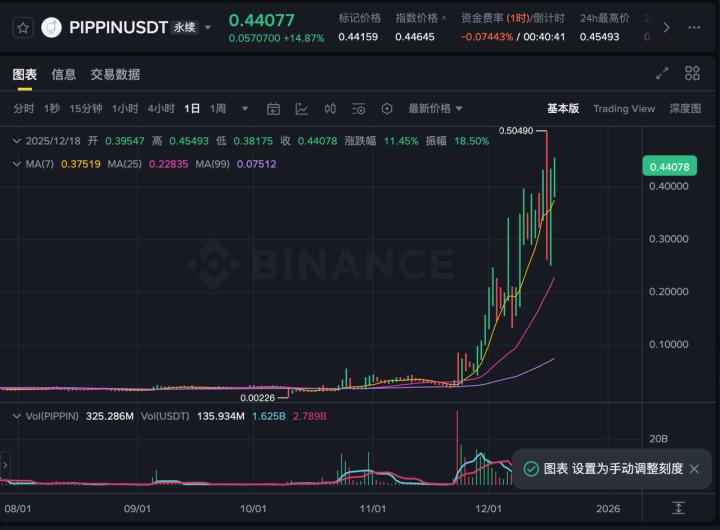Yesterday (March 11), in our discussion of the Trump topic, we mentioned a "debt" issue, and some friends left messages in the background saying they didn't understand it clearly. Here we will make a simple extension and supplement to this topic from the previous article.
First, let's take a quick look at the scale of US debt data:
The US government's debt has been at a relatively high level. According to relevant media reports, as of December 2024, the US government's debt will exceed $36 trillion, and it is estimated that nearly $3 trillion in US Treasuries will mature this year.
Secondly, let's take a look at the US 10-year Treasury yield:
The current 10-year US Treasury yield has fallen to 4.27%, as shown in the figure below. Combined with the recent trend of the US stock market, in simple terms, the decline in US Treasury yields and the stock market are often a sign that market sentiment is not good, and investors' concerns about the economic outlook are increasing.
The main reason for the recent market turmoil is Trump's tariff policy and the various uncertainties surrounding Trump himself, which have triggered a risk-averse sentiment in the market.
If we look at the debt issue and the US Treasury yield issue comprehensively, we will find an interesting phenomenon: the increase in global risk aversion will to a certain extent increase the demand for US Treasuries, which will lead to a decline in Treasury yields (corresponding to an increase in Treasury prices), and the decline in interest rates is obviously beneficial to the current situation of the US government, because the US government can refinance its debt at a more favorable interest rate.
In simple terms (speculation), it seems that Trump does not like the current relatively high 10-year bond yield after taking office, because the interest rate paid by the US government when refinancing its debt is usually closely related to the market interest rate, that is, when the Treasury yield declines, the US government can issue new debt at a lower interest rate, thereby further reducing the future debt interest cost.
The above logic can be simply expressed as: Trump hopes that the market will "collapse" to force bond prices to rebound (supplement: a sharp drop in the stock market can directly lead to fluctuations in the financial market, but after the short-term pain, it will still continue to form a situation favorable to the US government in the long run), so as to reduce the bond yield and carry out cheaper government refinancing. Therefore, after taking office, Trump has caused a series of events, including the tariffs and layoffs (what the government efficiency department led by Musk is currently doing) mentioned in the previous article. At the same time, the resulting economic recession dilemma will also force the Federal Reserve to take direct action, because the lower bond yields not only benefit the government's refinancing, but may also prompt the Federal Reserve to cut interest rates as soon as possible.
Therefore, in the previous article, we said that Trump wants to quickly become a great US president, and the simplest way seems to be "printing money" to make the US dollar "great" again, and the current simplest path to achieve this seems to be to play with "debt".
Of course, the above is still our fantasy and speculation. As for what Trump himself is thinking and what the US government's plans are, only Trump himself knows. As for how the Federal Reserve will respond to the violent market fluctuations, and whether it will cut interest rates again in June this year, these issues remain to be observed, and we can only take it one step at a time.
Next, let's return to the topic of the Bit market.
Since the beginning of this cycle, especially with the official approval of the ETF, more and more institutions are deeply involved in the Bit market, and some institutions (projects) in the Bit market are also establishing closer ties with the traditional market.
Many people say that the current Bit market is more and more like the US stock market, and I also agree with this view, because the next Bit cycle is likely to be more consistent with the macrotrend, rather than having its own time-running rules like the previous two bull market cycles.
I remember that in some earlier articles, we also mentioned that this bull market (2024-2025) may be the last big opportunity for ordinary people, such as in the article in December 2023, we mentioned that the next bull market (i.e. this bull market) may be the last opportunity for the Bit market to grow on a large scale. At that time, our reasons and expectations were mainly based on regulation (policy) and institutional participation, as shown in the figure below.
In other words, as the development progresses, with more traditional institutions and national teams entering the market, the Bit market will become more and more "standardized", which may not be friendly to most ordinary people who hope to get rich overnight or speculate. This means that in the future, we may (this is just a possibility and speculation, and no one can say for sure what the future will be) see less of the extreme prosperity or extreme depression cycles, and if the "transformation" conditions are met (the topic of transformation is detailed in the article on January 17th of Talk Li Talk Outside), it may gradually tend towards a new trend similar to the slow bull and long bull of the US stock market. Of course, in this long-term development process, I believe that at least 90% of the current massive projects will die or go to zero, which is also an inevitable path of development.
In terms of narrative, so far, among the hundreds of different narratives in the Bit market, only a few such as DeFi (the DeFi3.0 we mentioned in our previous articles), RWA and Stablecoin have achieved a certain breakthrough (including out-of-the-box) in terms of adoption, while others are still stuck at the pure hype or even pure air level (this is mainly based on the consideration of industry development, in fact, hype and air do not affect people making money in the Bit field, we need to take a dialectical view of any problem).
In the first article of this year (2025), we mentioned that starting from this year, the Bit field may usher in or begin to enter a new era, and some things or events that overturn our existing cognition may appear, and we will all become participants and witnesses.
In a simple review, in the more than 100 days that have passed this year, we have indeed seen a number of things that overturn our original expectations or cognition, such as: Xiaohongshu becoming a haven for TikTok refugees, the US president actually taking the field with his wife to issue coins, Deepseek actually igniting a new round of AI development boom and impacting global computing power, the White House hosting a Bit summit, the US Bit strategic reserve (although currently only at the executive order stage), the largest-scale hacking incident in history (Bybit was stolen $1.5 billion), and Trump's tariff war unexpectedly reopening the curtain...
Here is the English translation:As we look back and rethink this cycle, it seems that the investment logic is also gradually changing, with pure speculation gradually shifting to focus on things or targets that can sustainably create value. From a certain perspective, this is also a sign that the crypto market is becoming more mature. Although speculation will always exist in every financial market, many speculative theories (including the valuation methods of altcoin projects) in the crypto market may be undergoing some subtle changes. For example, when various speculative narratives are repeatedly utilized and hyped, and people have generally become tired of PvP games (including scam games), the original effective ways of playing may temporarily lose their effectiveness, unless the market can create an even greater (several times larger than before) FOMO factor.
In general, the wild (or savage) era of the Crypto market will eventually pass, and the days when one could easily achieve over 10 times returns by blindly buying altcoins during the so-called bull market will gradually disappear. The market will continue to retain the characteristics of Crypto, but it also seems to be gradually evolving into a transitional stage similar to the traditional financial market, with liquidity continuously flowing from the hands of those without much investment skills to the hands of more technically proficient people (individuals/institutions). But in the long run, this is a positive development for the Crypto industry.
Often, the end of a stage story also means the beginning of a new stage. As long as we grasp the present, look to the future, and continue to be patient, we will be fine.
Let's talk about these topics today. The topics discussed seem a bit broad, and everyone can also think about them from more dimensions. The sources of the pictures/data mentioned in the text have been supplemented in the Notion. The above content is just my personal perspective and analysis, and is only for learning and exchange, and does not constitute any investment advice.







